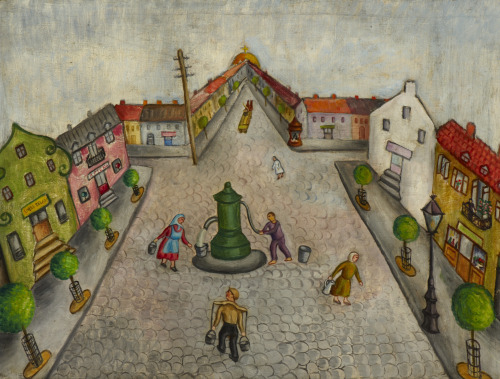ABSTRACT
This article is a first-of-its-kind exploration of the vernacular Judeo-Arabic popular nonfiction printed in Morocco between the early twentieth century and the 1960s, in the form of single pages, pamphlets or small books. This literature provided readers with knowledge pertaining to Jewish law (halakha), ethics, culture, history, and Zionist ideology, in order to reinforce Jewish religious and national identity. I suggest here that vernacular-speaking literatures emerged in Morocco in the early twentieth century following interwoven, mutually influential processes. The four processes that precipitated vernacular Judeo-Arabic nonfiction in Morocco consist of (1) the opening of local Hebrew printing houses across Morocco’s cities; (2) the emergence of new elites within Morocco’s Jewish communities; (3) the rejection of the obligation to observe religious strictures, coupled with secularization processes; and (4) the advent of a Jewish national movement, i.e. Zionism.
Tag: Nationalism
ABSTRACT
The article examines the rise and consolidation of Karaism in Tsarist Russia from the first half of the nineteenth century through the beginning of the twentieth. The creation of a specific national culture was on the one hand a consequence of the hostile policy the authorities applied towards Jews, which eventually favored Karaite’s departure from the originary community. On the other hand, and despite the late spread of Haskalah within Karaites as compared to the larger Rabbanite surroundings, the article claims that the former ones did share Maskilic ideals, partly because Karaites already displayed in the majority of cases distinctive signs of acculturation and secularization—all predisposing elements for the formation of a new feeling of national belonging.
ABSTRACT
This article analyzes the life writings of Jewish American authors Marcus Eli Ravage and Michael Gold, both of Romanian parentage but representing two different literary generations and two different ideological commitments. I argue that both authors revisited the dominant form of early twentieth-century immigrant autobiographies by other fellow Jews. These much-celebrated stories primarily foregrounded the embrace of the American Dream by a variant of the rags-to-riches narrative, under the guise of upward mobility stories of successful Jewish immigrants who culturally assimilated to American norms. Ravage’s An American in the Making offers a twist to this dominant narrative by his emphasis on the embrace of American cultural citizenship over American legal citizenship as the Jewish immigrant’s path to success. Gold rejects altogether the above rags-to-riches narrative and redefines Jewish identity in the Lower East Side as a working-class identity upholding a proletarian culture.
ABSTRACT
The peculiarity of the Jewish community of the city of Posen (Poznań) has been acknowledged in several studies. This pertains on the one hand to its sheer size, as until the end of the nineteenth century Jews accounted almost constantly for between 15 and 20 percent of the overall population—by far above the average of any other German district; on the other hand, it pertains to its composition, since so-called Ostjuden constituted a considerable share of the minority. These were mainly unassimilated orthodox Polish Jews, a unique feature for any German State and later for the German Reich, which forced the new authorities (Posen was assigned to Prussia in the late eighteenth century) to enforce specific integration measures.
This article shows how, as a consequence, the Jewish inhabitants of the area were drawn into a conflict of nationalisms and had to keep the balance between two conflicting cultures, that of the new ruling power, Germany, which sought to “germanize” them, and the traditional Polish culture. Against this background, and for fear of losing their financial independence as well as their cultural and religious identity, more than 30,000 Jews left the region from 1848 up to the end of the nineteenth century and emigrated to the United States or elsewhere.

